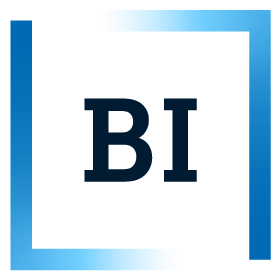EXC 3430 Fundamentals of Accounting and Finance
EXC 3430 Fundamentals of Accounting and Finance
Accounting can be regarded as an information system that helps multiple decision makers to make smarter decisions. The aim of this first course in the field of accounting is to give students basic elementary accounting knowledge and skills. At the end of the course, students can make smart decisions based on accounting numbers by carrying out basic accounting specific analyses. They can also take part in discussions about accounting problems and communicate the results of their analyses in an understandable manner.
After having completed the course, students will be capable of explaining general accounting concepts and basic tools used for analyzing accounting specific problems.
- Examples of concepts: accrual accounting, income vs. cash flow, fixed and variable costs vs. direct and indirect costs, sunk cost, opportunity costs, internal rate of return, …
- Examples from the toolbox: balance sheet and income statement, return on assets, ratio and variance analyses, net present value, contribution margin calculations, gross margin calculations, break-even analysis, …
After having completed the course, students will be able (a) to apply acquired knowledge (concepts and tools) when analyzing and discussing accounting problems, (b) to distinguish between relevant and irrelevant information and (c) to answer accounting specific questions in an understandable way. Examples:
- Students will be able to apply the respective accounting tools correctly.
- For basic descriptions of economic situations, students will be able to choose the correct tool for analyzing these situations and apply it correctly.
- For more complex situation descriptions, students will be able to search for relevant information, link it to the correct tool and apply the tool correctly.
Since the toolbox is of a general nature, the learning outcomes also apply in international settings.
After completing the course, students will be able to ask critical questions and reflect on crucial assumptions and theories within the field of accounting. They will thus be able to contribute to profitable and sustainable business activity.
The course consists of three subtopics:
Subtopic 1: Financial Accounting
- Main financial statements (income statement and balance sheet)
- The balance sheet equation (basic accounting relationships)
- Transactions (effect on income statement and balance sheet)
- Basic accounting policies (including depreciation and accrual accounting)
- Basic financial statement analysis (liquidity, solvency, profitability and efficiency)
- The relationship between performance indicators
Subtopic 2: Cost and revenue analysis
- Cost theory (including variable and fixed costs, direct and indirect costs)
- Cost allocation (including cost types, cost center and cost object)
- Cost calculations (including contribution and ABC calculations)
- Zero-point analysis (including safety margin)
- Short-term decision problems (including special orders, campaigns, outsourcing and cost/revenue relevance)
Subtopic 3: Introduction to finance and investment decisions
- Introduction to budgeting
- Capital budgeting
- The time value of money
- Discounted cash flow methods (net present value and internal rate of return)
Comments:
• The use of Excel will be enhanced and integrated in the course.
.
Information about what is taught on campus and via digital formats will be presented with the lecture plan before the start of the course each semester.
Please note that while attendance is not compulsory in all courses, it is the student’s own responsibility to obtain any information provided in class.
Higher Education Entrance Qualification.
Disclaimer
Deviations in teaching and exams may occur if external conditions or unforeseen events call for this.
No specific prior knowledge is required.
| Assessments |
|---|
Exam category: Submission Form of assessment: Written submission Invigilation Weight: 100 Grouping: Individual Support materials:
Duration: 3 Hour(s) Exam code: EXC 34301 Grading scale: ECTS Resit: Examination every semester |
| Activity | Duration | Comment |
|---|---|---|
Teaching | 30 Hour(s) | Synchronous learning activities. |
Individual problem solving | 15 Hour(s) | Asynchronous learning activities. |
Student's own work with learning resources | 155 Hour(s) | Pre- and post-lecture work. Exam preparation. |
A course of 1 ECTS credit corresponds to a workload of 26-30 hours. Therefore a course of 7,5 ECTS credit corresponds to a workload of at least 200 hours.
